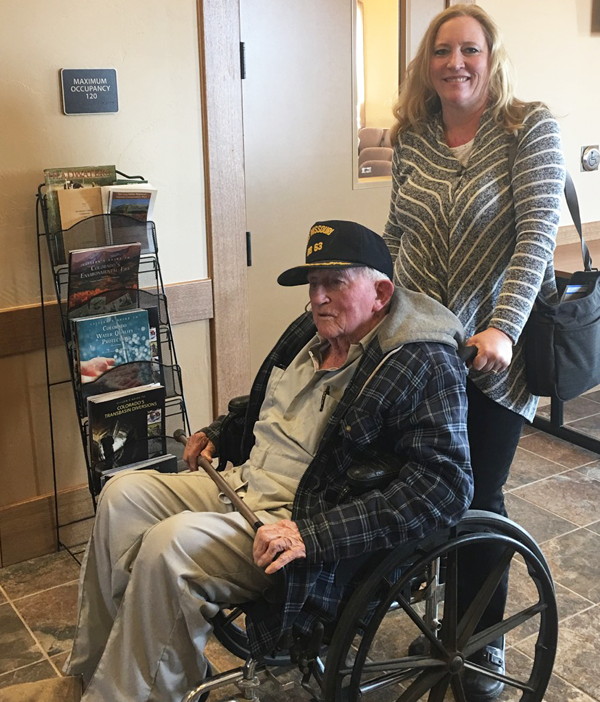Sowards testifies in well regulation trial

ALAMOSA — Ahead of schedule, the trial on groundwater regulations for the Rio Grande Basin concluded its second week with proponents finishing their testimony and objectors introducing their witnesses.
On the stand for nearly two hours Thursday afternoon was Kelly Sowards, 93, lifelong Manassa resident, rancher and World War II veteran who provided a history lesson particularly about the Conejos River systems and the impact well pumping has had on them.
Sowards served on the Conejos Water Conservancy District board for 43 years, sometimes as president, as well as the Rio Grande Water Conservation District from its inception in 1967 until 1989.
Sowards reminded the court that in the 1840’s a group of people came up from New Mexico looking for a place to settle and began using the Conejos system to grow crops and by 1855 had six ditches running and 26 ditches by 1860, senior to every other ditch in the state except People’s Ditch, San Luis. He said all of the Conejos system had been overappropriated by 1895.
He described the system including return flows and springs from the confined aquifer, and talked about water regulations and legislation and agreements, such as the Rio Grande Compact, which affects the Conejos and Rio Grande systems.
He spoke about the development of irrigation wells in the Valley, specifically in the Conejos system. A lot of them were in the confined aquifer, which was supplying tributaries to the springs in the Conejos River system.
(Those springs, specifically Arroya or Diamond Spring, are points of contention with the proposed well regulations)
“They didn’t have any water rights,” Sowards commented on the well drilling. “They hadn’t been adjudicated. They hadn’t been put in the priority system. They just put them down … We didn’t notice much until about 1947 until we could see the springs weren’t as effective as they have been.”
Calling the Conejos system the “pearl of the San Luis Valley,” because it had more water per acre of land than anywhere else in the Valley, Sowards described a time when water was plentiful. However, as more and more wells were drilled, he said the water for surface water users began drying up.
Well irrigators were under no regulations at all and have been able to continue growing multiple cuttings of alfalfa when surface water users could barely get one decent crop, he said.
The groundwater regulations promulgated by the state engineer and currently before the court would require well irrigators to remedy and replace their injurious depletions to surface rights.
Objectors will continue presenting witnesses and testimony next week, with rebuttal following. Chief District/Water Judge Pattie Swift had initially scheduled the well rules trial for eight weeks and scaled it back to four when most of the objectors reached agreements with the state. As the trial has moved more rapidly than expected, it appears it will be concluded in three weeks.
Caption: Escorted by his daughter-in-law Camille, Kelly Sowards enters the courtroom at the Rio Grande Water Conservation District to testify on Thursday afternoon regarding proposed groundwater regulations./Courtesy photo



